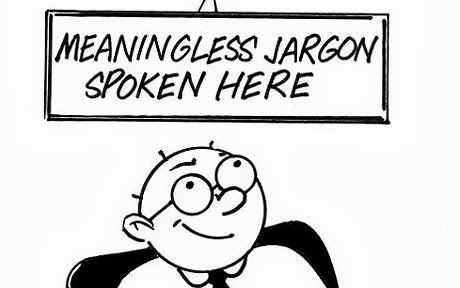You have been Jargoned!
This article is written by Shuba Krishnan, Senior Business Development Manager of Innity.

As an insider in the digital advertising, aka ad-tech industry, I can vouch for the sheer quantity of jargon produced here, day after day. It sometimes makes me wonder if we take ourselves and the work we do, too seriously. After all, mostly what we are trying to do is to make gullible internet users look in to a box (or banner if you will) and click their mouse and go to a website that is going to give them more of the mumbo-jumbo that is the internet. But well, we all do this for bread and butter, so we have to make it sound important, right? And that is where jargon comes to our rescue!
Jargon, however are not new in advertising, our big brother (or grandfather considering it is at least 50 years older) Television advertising was also an expert at producing them. But what the ad-tech space has managed to do is mint jargon by the minute, and that my friend is no mean achievement! Sample these- Remarketing (to the uninitiated would just mean marketing again- but little would they know that we will chase them around the internet and spy in to all that they do, only to make them buy that next bag or book that hotel room), Cross-Channel Marketing (We will find you wherever you go- you cannot hide anywhere, Changing your device? – No worry- We just need to wait till you perform that next Social Login!) Dynamic Creative Optimization (We just got better at snooping :)) CPM (pay us for the ad- even if no one ever saw it – in the light of comScore’s finding that nearly half of online ads are never seen by users), and the John Oliver fame Native Advertising (We will show you an ad, which is not an ad, but it is just “Sponsored”- by the advertiser of course! So is it an ad or is it not?). The list goes on…
Lost in all the jargon is the inherent beauty of the internet as a medium, and its usefulness to advertisers and consumers alike. Going beyond the fact that it is the only truly on-demand medium and it is omnipresent; it offers a real opportunity to engage the user in a way few other mediums can claim to. Therefore, it is vital to recognize this core benefit and structure campaigns in a way that can benefit from the ‘opportunity to engage’ (wait, did I just mint a new jargon? :) )
‘Opportunity to engage’ can mean different things to different brands. One framework that is very useful is the “7-level Engagement Hierarchy” (see diagram below) as described in the book “Digital Impact – The Two Secrets to Online Marketing Success by Vipin Mayar and Geoff Ramsey”. It outlines a simple approach to measuring engagement and recommends that marketers measure their performance based on an Engagement Score (refer to the book for more details).
The engagement scoring approach can be extended to online campaigns with ease, and it would help correct the undue importance currently accorded to lower funnel metrics ( think clicks and conversions). This correction would in turn spur creativity ,which is now sadly missing in digital conversations . So, in summary, let’s get creative! (Not only in coining jargon but also in engaging users online :)).

